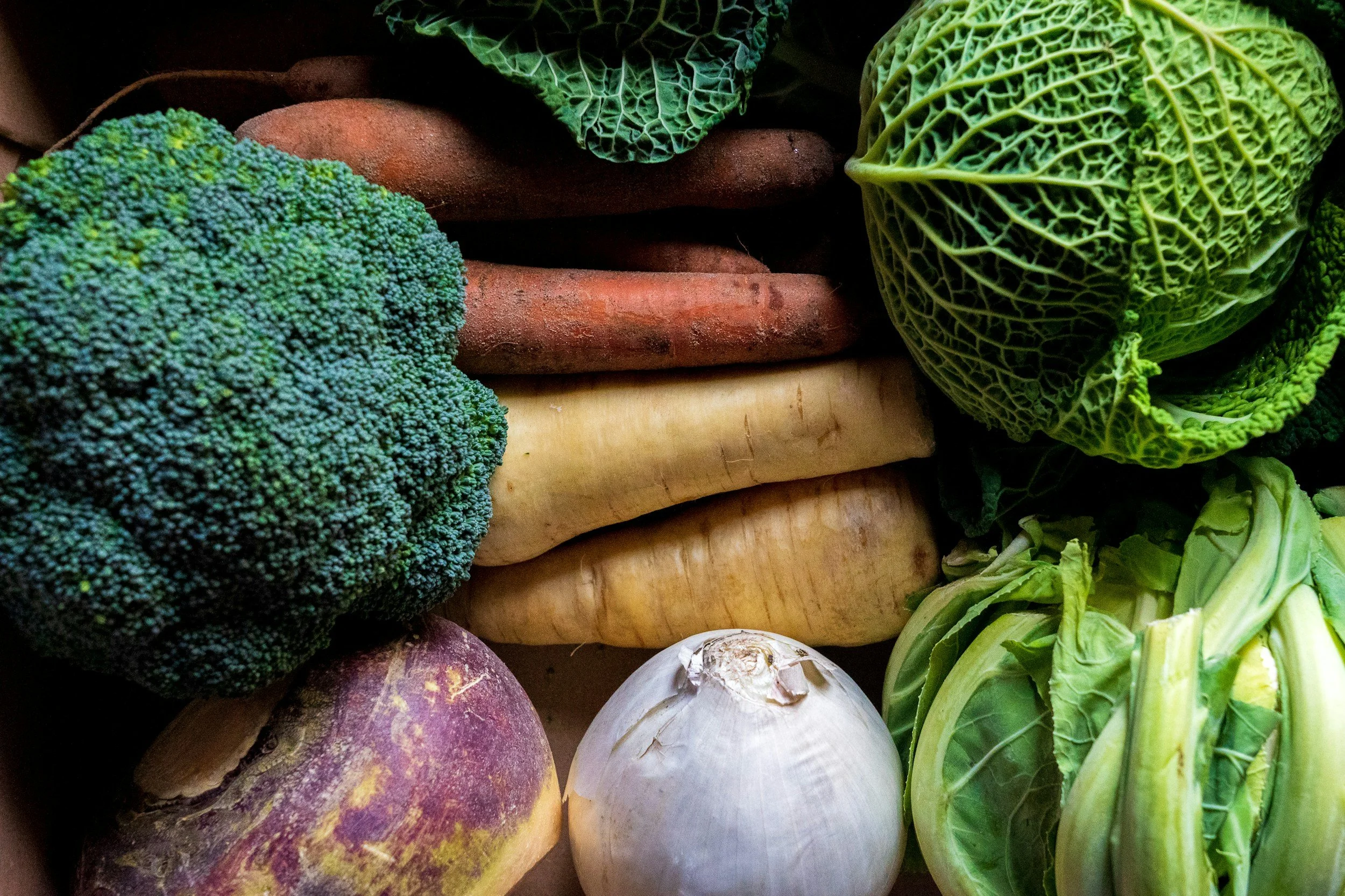So Long, Salads and Hello, Soup: Eating Seasonally Brings Flavor and Nutrition to Wintertime Meals
Autumn has arrived, and with it come colder, darker days, plus a distinct lack of fresh tomatoes and strawberries at the farmers’ market.
For many of us, this seasonal transition is a bit painful. Saying goodbye to the sun and all our favorite foods feels like a slow slide into our comfy pants for the next six months.
Just because the weather is shifting doesn’t mean we’re doomed to eat beige meals full of comfort carbs and little else. Your body does, in fact, appreciate greens and fiber just as much in November as it does in May. But why, and more importantly, how do we eat healthy, seasonal meals that fill and nourish us all winter long, when produce feels lacking and holiday cookies beckon at every party?
Why Seasonal Eating Matters
Choosing to enjoy vegetables that are in season in your area has a few major benefits:
Food that’s been picked and stored for a shorter period of time is at its best, nutritionally and flavor-wise.
Seasonal foods are often cheapest when it’s their time to shine, and off-season foods typically cost more.
Enjoying foods that were grown closer to home lowers your diet’s carbon footprint.
But I Live Somewhere Cold! What’s in Season Near Me?
I hear you! We can’t all live in the tropics. When the world is a frozen slush puddle, it’s hard to imagine that any fresh fruits and veggies could be available locally. Here’s a quick rundown of some favorites.
Root veggies: roast carrots, beets, turnips, parsnips, sweet potatoes
Hearty greens: toss kale, collards, Swiss chard, cabbage
Winter squashes: slice into butternut, acorn, spaghetti squash
Cruciferous veggies: choose Brussels sprouts, broccoli, cauliflower
Citrus fruits: enjoy oranges, grapefruit, and clementines
Apples and pears: stock up and store these well into winter
Hearty veggies like broccoli, cabbage, carrots, and turnips make filling additions to winter recipes.
Practical Tips for Getting Your Hands on Some Seasonal Veg
Finding fruits and vegetables that were grown closer to home during the winter isn’t nearly as tough as you may think.
Sign up for a winter CSA: Let your local farmer handle the details for you. You’ll get regular deliveries of long-storing winter crops and possibly some fresh greenhouse goodness.
Store your own: An hour or two in the kitchen can transform a late-summer farmers’ market haul into weeks of freezer-friendly meals to last all winter.
Frozen vegetables aren’t cheating! If your local grocery store is lacking in the fresh section, hit up the freezers for vegetables that were frozen at their best. They still retain much of their nutrition and flavor.
Eating Well When Access Is a Struggle
Reality check: for lots of families, paying for a CSA or accessing a well-stocked grocery store simply isn’t an option. When budgets are tight and access is less than stellar, eating well is still one way you can take control of your health and well-being. Here are some strategies for stretching that grocery budget or doing the best you can with what you’ve got.
Use frozen vegetables and fruits. They’re affordable and have a long shelf life, but are still nutrient-rich.
Check the labels if you’re choosing canned produce. Canned fruits and vegetables often have a lot of added salt and sugar. Look for those that are low-sugar and low-sodium for the best health benefits. That said, any produce is better than none!
Buy in bulk when possible. A giant bag of carrots or potatoes keeps costs down, but can be stretched for many meals.
Check out community resources. Food co-ops and local food banks may offer seasonal produce to families in need.
Add some shelf-stable nutrient boosters. Beans, lentils, and whole grains provide fiber and nutrients and offer a base for filling meals. Try a bowl with warm lentils, thawed frozen broccoli, and your favorite condiment.
Progress, Not Perfection
Seasonal eating is fun and do-able (I promise!). Start with small shifts, like adding a handful of frozen green beans to your next casserole or sneaking a little sauteed kale into a pasta dish. Your body appreciates the effort!
Keep meals interesting by prepping the basics and adding to them throughout the week. Keep a batch of beans or brown rice on hand to top to your heart’s content with protein and roasted veggies.
Many cultures are absolute masters of wintertime cooking. Look to Eastern European recipes like Hungarian goulash, or top Japanese ramen with hearty sauteed vegetables to make a comforting winter dinner. Experimenting with new flavors can bring joy and novelty to the dark winter months.
Seasonal Eating is a Year-Round Mindset
Seasonal eating isn’t about restriction; it’s about variety, balance, and connection with the world around us. Those juicy melons and crunchy cucumbers will be back with us soon! Even when life makes shopping and cooking difficult, small steps make a big difference. Notice what’s in season and try a new vegetable this week. Share the recipe with a friend, and set yourself up for a winter of cozy, healthful meals.
